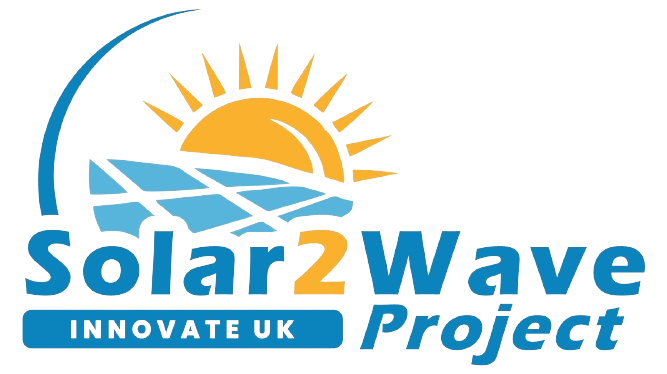After going through a series of discussions and careful planning, the time came to realize the brilliant idea – assembling an FPV pilot project. This crucial moment marked the culmination of the team’s extraordinary dedication and hard work. Taking place at Orela Shipyard, Gresik, the assembly of the FPV pilot project became a symbol of close collaboration between experts and professionals. Starting from January to February 2024, the atmosphere at Orela Shipyard is filled with passion and enthusiasm from the experts directly involved in the assembly process. Every assembly step is carried out with high precision and precision. Experts, with their extensive expertise and experience, play an important role in ensuring the smoothness and accuracy of the assembly process. More than just assembly, this moment is the realization of the vision and mission of the FPV project. This pilot project is an important steppingstone in taking the FPV project to the next stage, paving the way for various new possibilities and opportunities.
This assembly is carried out in several stages as follows.
- PCB manufacturing and sensor installation on PCB

- Floating structure assembly for PV modules and installation of PV modules to the structure


Process continues beyond sensor installation, extending to the assembly of floating structures designed to support Photovoltaic (PV) modules. A team of skilled engineers and technicians meticulously fabricates the floating structures, ensuring they meet stringent specifications for stability and durability in marine environments. With precision, each component is assembled, from buoyant pontoons to sturdy support frames, culminating in robust platforms ready to harness solar energy atop the vast ocean expanse.
As the floating structures take shape, attention turns to the installation of PV modules, a critical step in harnessing renewable energy for maritime applications. Carefully positioned on the sturdy frames, the PV modules are secured in place, their sleek surfaces poised to capture sunlight and convert it into clean, sustainable power. With meticulous attention to detail, wiring harnesses are routed and connected, ensuring seamless integration into the shipboard electrical systems.
- Connecting the sensor to the inverter and solar charge controller



- Wave barrier assembly above the floater


Simultaneously, a wave barrier assembly takes form above the floating structures, engineered to withstand the relentless forces of the open sea. Constructed with high-strength materials and precision engineering, the wave barrier serves as a shield, protecting the PV modules and floating structures from the impact of surging waves and inclement weather. Its sleek design minimizes drag and turbulence, ensuring maximum efficiency and stability in even the harshest marine conditions.
- Installation of the sensor box on the floating structure


With the floating structures and wave barrier in place, the final phase of the project commences: the integration and installation of the sensor box onto the floating structure. Positioned strategically atop the sturdy framework, the sensor box houses a sophisticated array of monitoring equipment. With precision, the sensor box is securely mounted, its sensors poised to collect invaluable data on environmental conditions, power generation, and system performance.
- Laying anchors in the form of concrete on the seabed


Following the meticulous assembly of floating structures and the integration of PV modules, the focus shifts to anchoring the system securely to the seabed, ensuring stability and resilience in the face of oceanic forces. Teams of skilled divers and marine engineers deploy concrete anchors onto the seabed, strategically positioning them to provide robust support for the floating structures above.
- FPV system assembly construction and electrical

- Placing the FPV system into the sea and connecting the anchor to the FPV system

With the anchors in place, the next phase involves the careful placement of the Floating Photovoltaic (FPV) system into the sea. Guided by precision instruments and coordinated teamwork, the FPV system is lowered into the water, its sleek design buoyant atop the ocean surface. Once positioned, meticulous connections are made, linking the anchors securely to the FPV system, establishing a steadfast bond between structure and seabed.
- Withdrawing cables from the FPV system and installing wind sensors and CCTV



Simultaneously, technicians embark on the task of withdrawing cables from the FPV system, a critical step in preparing for the integration of additional monitoring equipment. With meticulous precision, cables are routed and organized, ready to accommodate the installation of wind sensors and Closed-Circuit Television (CCTV) cameras. As the final touches are made, wind sensors are carefully mounted atop the FPV system. These sensors, calibrated to detect even the slightest changes in wind speed and direction, provide invaluable data for optimizing system performance and safety.
Meanwhile, CCTV cameras are strategically positioned across the FPV system, their unblinking lenses poised to capture every detail of the surrounding environment. From monitoring potential hazards to providing real-time surveillance of the installation, these cameras serve as vigilant guardians of maritime operations.
With the installation complete, the integrated FPV system stands as a testament to human ingenuity and technological innovation, poised to harness the power of the sun while withstanding the relentless forces of the sea. In the vast expanse of the ocean, amidst the shimmering waves and boundless horizon, a beacon of sustainability emerges — one that promises to shape a brighter, more resilient future for maritime industries around the world.

Leave a Reply